“Preserving the Past: Techniques for Removing Paint from Wood at Heritage Buildings”
- admin
- December 28, 2022
- 8:46 pm
- No Comments
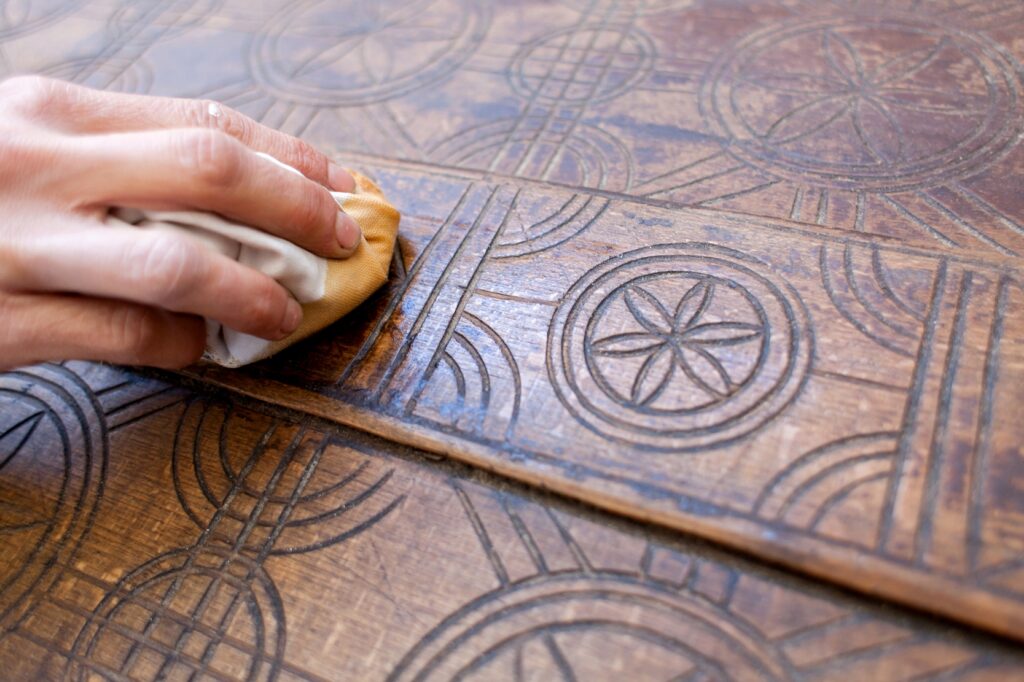
Paint removal is a common task that is often necessary when restoring or preserving heritage buildings. Removing paint from wood at these buildings can be challenging, as it is important to preserve the integrity and character of the wood while also effectively removing the paint. There are several methods for removing paint from wood at heritage buildings, each with its own advantages and disadvantages.
It is important to consider the age and condition of the wood, as well as the type and condition of the paint, when choosing a paint removal method. In this article, we will discuss various methods for removing paint from wood at heritage buildings, including chemical paint strippers, heat guns, sanding, scraping, Peelaway, soda blasting, and abrasive blasting.
Chemical paint strippers: Chemical paint strippers are products that contain chemicals that dissolve the paint, making it easier to scrape off. They can be applied to the surface of the wood using a brush or sprayed on, and are usually left to sit for a period of time before the paint can be removed. Chemical paint strippers can be effective at removing multiple layers of paint, but they can also be toxic and may damage the wood if left on for too long. It is important to follow the manufacturer’s instructions and use protective gear, such as gloves, goggles, and respiratory masks, when working with chemical paint strippers.
Heat guns: A heat gun is a tool that uses hot air to soften materials, such as paint. It can be used to remove paint from wood by directing the hot air onto the surface of the paint. The heat causes the paint to soften and become more pliable, making it easier to scrape off. However, heat guns can also damage the wood if they get too hot, so it is important to use them with caution and to keep the heat gun moving to avoid overheating any one spot. It is also a good idea to use a lower temperature setting, if available, to minimize the risk of damaging the wood. paint strippers can be effective at removing multiple layers of paint, but they can also be toxic and may damage the wood if left on for too long. It is important to follow the manufacturer’s instructions and use protective gear, such as gloves, goggles, and respiratory masks, when working with chemical paint strippers.
Sanding: Sanding is a mechanical method of removing paint that involves using abrasive materials, such as sandpaper, to wear away the paint. This can be done by hand with sandpaper or with power tools like orbital sanders. Sanding is effective at removing paint, but it can also remove some of the wood’s surface, which may not be desirable at a heritage building. It is important to use the appropriate grit of sandpaper and to sand with the grain of the wood to minimize damage.
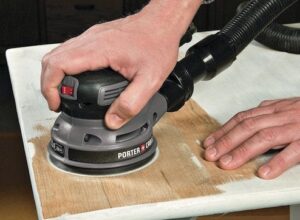
Scraping: Scraping is a simple method of removing paint that involves using a tool, such as a scraper or putty knife, to physically remove the paint from the wood. This method is effective for removing loose or flaking paint, but it may not be suitable for removing multiple layers of paint or for removing paint that is well-adhered to the wood. It is important to use a scraping tool that is not too sharp, as a sharp tool may damage the wood. It is also a good idea to use a gentle scraping motion to avoid damaging the wood.surface, which may not be desirable at a heritage building. It is important to use the appropriate grit of sandpaper and to sand with the grain of the wood to minimize damage.
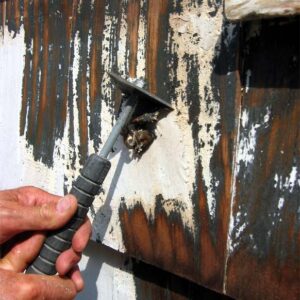
Peelaway: Peelaway is a paint removal product that consists of a layered system of abrasive papers and a paste that is applied over the top. The paste is made from a combination of water, pH neutralizer, and other ingredients that soften the paint and allow it to be removed more easily. The abrasive papers are then peeled away, removing the paint along with them. Peelaway is effective at removing multiple layers of paint and can be used on a variety of surfaces, including wood. However, it may not be suitable for use on very delicate or finely detailed surfaces, as the abrasive papers may damage them. It is also important to follow the manufacturer’s instructions when using Peelaway, as the paste can be toxic if ingested or inhaled.
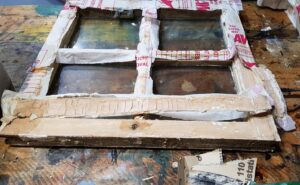
Abrasive blasting: Abrasive blasting is a paint removal method that uses high-pressure air to propel abrasive particles, such as sand, at a surface to remove paint. The abrasive particles are directed at the surface using a hose and nozzle, and the pressure of the air helps to remove the paint. Abrasive blasting is a powerful method that can remove multiple layers of paint quickly, but it can also cause significant damage to the surface if not used carefully. It is not recommended for use on delicate or finely detailed surfaces, such as those found on many heritage buildings, as the abrasive particles may damage or destroy these details. Abrasive blasting can also produce a lot of dust and debris, which can be harmful if inhaled. It is important to use caution and protective gear when abrasive blasting, and to follow all safety guidelines and regulations.
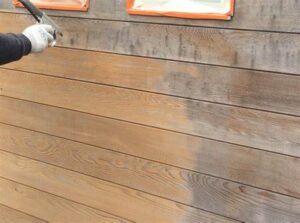
Soda blasting: Soda blasting is a paint removal method that uses fine particles of baking soda to remove paint from a surface. The soda particles are propelled at high speed onto the surface using compressed air, where they remove the paint without damaging the underlying material. Soda blasting is a gentle method that is effective at removing paint from a variety of surfaces, including wood. It is particularly useful for removing paint from delicate or finely detailed surfaces, as it does not cause as much damage as other abrasive methods. However, it may not be suitable for removing very thick layers of paint, as it may take several passes to remove all of the paint. It is also important to use caution when soda blasting, as the soda particles can be harmful if ingested or inhaled.
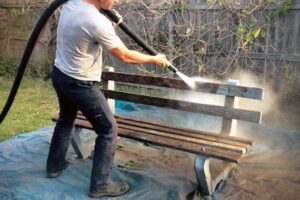
As with any paint removal method, it is important to test the method on a small, inconspicuous area before applying it to the entire surface. Some methods, such as chemical paint strippers and heat guns, may also require the use of protective gear, such as gloves, goggles, and respiratory masks. It is also a good idea to consult with a professional conservator or restoration specialist before attempting to remove paint from a heritage building, as they will have the knowledge and experience to recommend the most appropriate method for the specific situation.

Matt Sarmadi is an international trained Architect with a passion for carpentry. While he has spent the majority of his career working on commercial building restoration, he has always had a love for working with wood. In this blog, he shares his knowledge and experience with carpentry, including tips and techniques, and the latest tools and material. He is the owner of Renofield Inc.
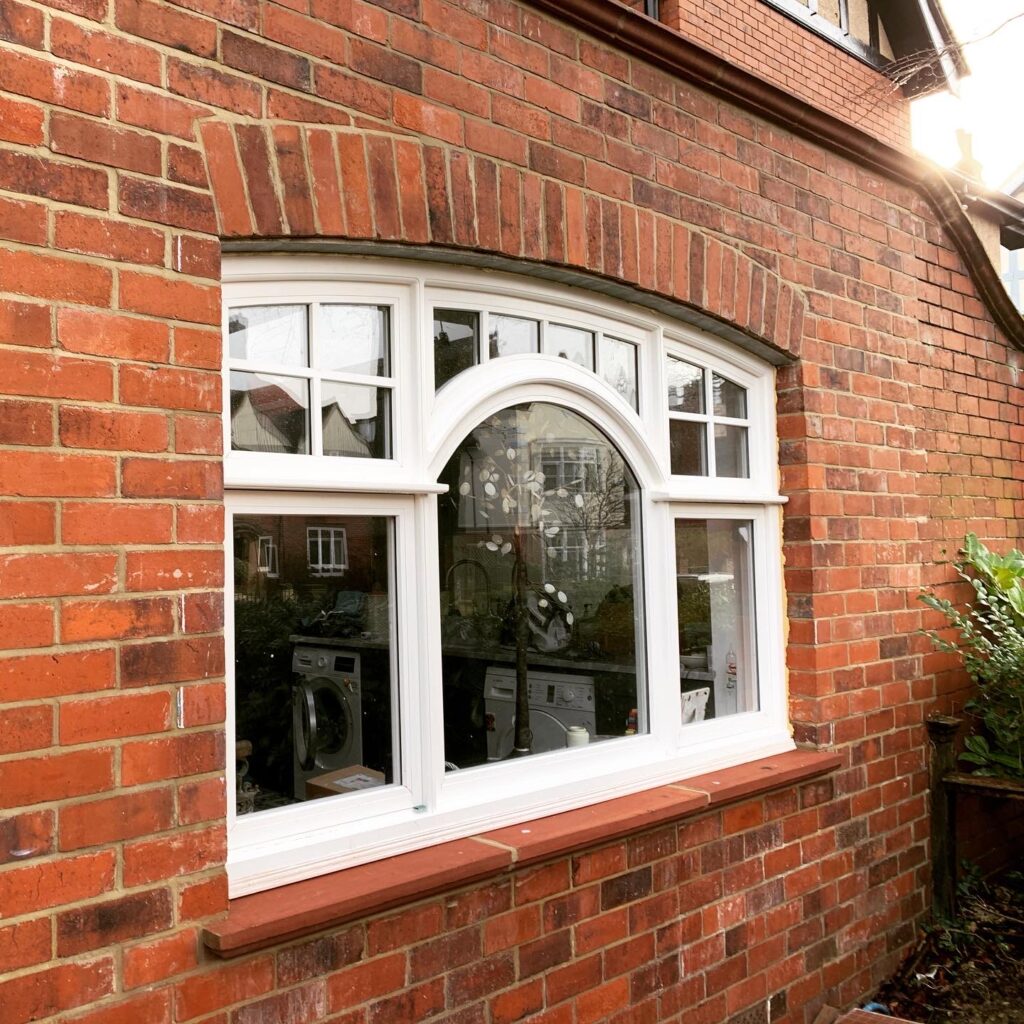





We believe that it is important to protect the environment and preserve the unique character of our communities.
Copyright © 2022 For RENOFIELD. All Rights Reserved.

Copyright © 2022 For RENOFIELD. All Rights Reserved.